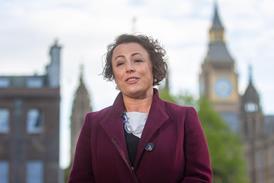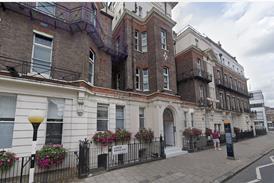The dramatically reduced level of family mediations is propped up by matters begun before April’s legal aid cuts. If no action is taken, there is much worse to come.
Here’s a metaphor for the government’s private family law mediation policy, in large part in place since April 2013 when most legal aid for private family law cases was cut. Depending on the circumstances there must be a point at which, even though an airplane’s engines have failed, the fact it’s gliding provides some element of comfort to passengers and crew.
The policy is descending, but hasn’t yet fallen out of the sky.
Unless something is done, this comparison is entirely correct, as shocking figures from a freedom of information request to the justice ministry reveal.
We knew family mediations had fallen since legal aid cuts kicked in. What was less clear was the way in which such mediations are so large a part dependent the role of a lawyer – once just about adequately funded by legal aid, now limited to a one-off fee of £150-£350.
From April till October 2013 there are just 20 instances of lawyers using public funding for ‘help with mediation claims’.
So the figures for the six months from April 2013, which already showed a drop in mediations of 51%, are in the short term propped up by matters begun prior to April 2013’s cuts. (In the 12 months preceding the cuts, lawyers made 62,390 ‘funding code’ referrals to publicly funded family mediation.)
Many have suspected or suggested that the reason for the fall in mediations might be down to the MoJ’s aim of writing lawyers out of private family law disputes – but these figures pretty much prove it. (My thanks, here, to Marc Lopatin of LawyerSupportedMediation.com for his diligence in unearthing these stats through FOI requests.)
Hence a pre-Christmas plea to Resolution-trained mediators from then-minister Lord McNally to help the MoJ raise the profile of mediation, and last week’s reannouncement of ‘mandatory’ mediation for couples headed to the divorce courts.
The latter is, in fact, nothing of the sort – only the applicant can be ‘compelled’ to attend the mediation information and assessment meeting (MIAM).
And as Lopatin tells me: ‘Making it a requirement to meet a mediator as a pre-condition for taking court action will not see a huge rebound in mediation numbers. Not only is the intervention too late in proceedings but where is the evidence that using compulsion efficiently encourages the take-up of an option where success is rooted in voluntarism and willingness?’
He points out that in 2012/13, only 12% of 75,000+ referrals to mediation ended in agreement. Of this total, over 62,000 referrals were the result of legal aid lawyers being compelled to refer their clients to mediation to satisfy funding requirements.
There may be some grim satisfaction in proving the link between lawyer-involvement and the success of mediation.
But where does that leave government policy, lawyers and, not least, divorcing couples? Currently, whoever is right, all are leaving the sky – headed ground-ward.
One small step first. McNally as good as swallowed his pride in the letter to mediators (which included a good many lawyers) asking for help – an appeal that touchingly included a plea to help with media coverage. It’s time to reflect that change of tack in a redraft of all the promotional material - money allocated to help promote mediation will otherwise be badly spent.
I’d be slow to judge lawyers who are preferring to concentrate on older funded cases rather than start on the £150 sort. It’s easy to quip that they have their heads in the sand/are in denial et cetera – but it can be difficult to plan for the long term when any change of tack will cause a possibly firm-ending cash flow problem in the short term.
Something has to happen here though.
Although they’ve had their own problems, it feels like Co-Op Legal Services’ Christina Blacklaws was right to argue that the potential size of the legal market is substantially bigger than it currently is. Communicate the value that legal advice can add for clients, give reassurances on price and payment model, and more people will find a way to pay legal fees – so the argument runs.
Viewed like that, the £150-£350 mediation fee is more like an extension of the (and advance apologies, I don’t like the phrase either) marketing budget – a chance to promote both the process of mediation, and some privately funded legal advice to the client.
After all, as Rachel Duke, head of the family department at London firm Ronald Fletcher Baker, pointed out to me – without the support of a lawyer, further down the line there may be problems with what’s agreed being unfair or unworkable.
That’s a huge communications job to do – and if right, I know the message will get through too late for many practices, work from whose older files may not stretch that far.
However this option – and the government’s policy – stand less chance of succeeding while the Ministry of Justice insists that successful private family law mediations are somehow divorced from legal advice.
Currently the whole lot is set to head towards terra firma at alarming speed.
Eduardo Reyes is Gazette features editor



























7 Readers' comments